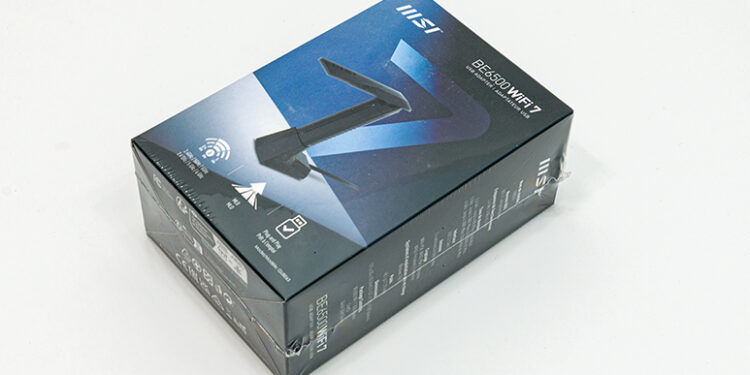Final Score: 92%
With the BE6500 model, one can actually see the thought process and core philosophies MSI thinks are most important to buyers of these networking devices. Namely, MSI has focused on four core areas. On the portability front, the BE6500 easily fits in a front pocket and only weighs about ~48 grams… allowing you to ‘grab and go’. Thanks to its large, hinged, antenna array, the BE6500 also delivers easily optimized performance when you get where you are going. Thanks to its… toning down of the MSI branding, the BE6500’s massively improved aesthetics allow it to easily transition from a working environment (be it business or higher education) to your home. Furthermore, that excellent cradle makes docking it on the main system a breeze. These are all great reasons to choose the BE6500 over the competition.
However, the best of them all is the asking price. This is a Realtek RTL8912-based device with a beyond beefy antenna array (for its class)… and yet it costs less than what most of the other major companies are asking for their 8912-based models. Versions which, generally speaking, will provide worse performance as they do not have large, let alone adjustable, antennas. Hell. Let’s be honest. They don’t even have beefy antennas. They just rely upon their name-brand recognition to sell them to the unsuspecting. So, if you are looking for a WiFi 7 USB-based networking adapter that is portable, powerful, and yet reasonably priced, the MSI BE6500 demands your attention. It is arguably the best example of its class we have seen to date.
Now. With all that said… the BE6500 is not perfect. A good argument can be made for opting for the older WiFi 6E AXE5400 version over it… and certainly sticking with the AXE5400 if you already own said model. Bluntly stated, the number of WiFi 7 enabled routers (and access points) is limited to say the least… as WiFi 7 was only certified last year. Thus, the potentially deal-breaking, dreaded question: why pay ~20 (USD) or ~30 (CAD) more for a feature you cannot use right now unless you also pony up the big bucks to replace 1-2-year-old working gear? Counteracting that is the fact that the older Realtek controller in the AXE5400 is (close but) not as fast on 2.4 and 5 GHz networks as the BE6500. As such, the real question you will have to ask yourself (and answer) is what is most important? Performance and ‘future proofing,’ or overall value. Answer that question and the choice becomes clear. Just rest assured that when you opt for either the newer or the older MSI USB networking adapter models, you are going to get one heck of a portable device.


The Review
MSI BE6500 WiFi 7
The portable MSI BE6500 WiFi 7 USB adapter improves upon its predecessor with solid performance and features at a competitive price, though its core WiFi 7 benefit requires consideration against current network infrastructure.









